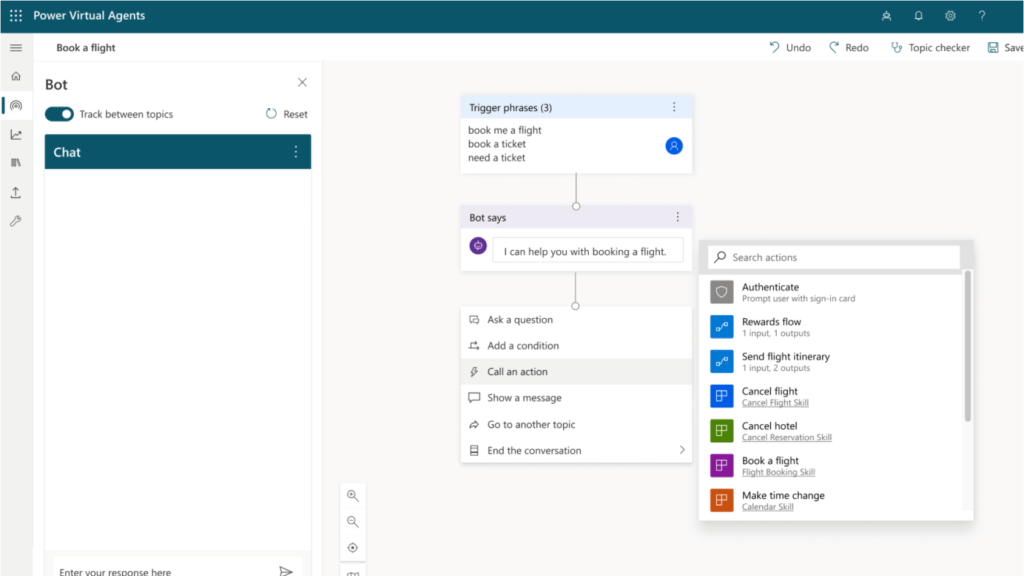You need a strategic customer journey if you want to keep your customers. After all, an organization can boost revenue by 10-15% by improving customer experience.
An effective customer journey results in better customer retention, satisfaction, and experience. In fact, businesses focused on customer satisfaction have 1.5X higher employee satisfaction, 1.6X higher brand awareness, and 1.9X higher order value. Also, 73% of consumers make purchase decisions based on brand experience.
Nevertheless, consumer expectations skyrocket in tandem with digital disruption. Therefore, organizations are constantly under pressure to deliver the right customer experience.
That is where chatbots come in.
Chatbots help companies by:
- Reducing customer waiting time by answering common customer questions like store hours, order and delivery status, locations, product details, etc.
- Quickly resolved customer support cases by answering straightforward questions repeatedly. In some cases, they can route issues to support agents.
- Redirecting customers to needed resources.
- Handling initial interactions and helping human agents follow up on the chat history.
- Gathering leads by asking questions and providing this information to the sales rep to offer personalized services.
Yet, chatbots get a bad rap.
Knowledge is the key to a chatbot’s success. It should be able to understand complex problems, offer appropriate solutions, and communicate effectively. It is more than just answering questions. Because bots that do not understand customer intent fail to respond intelligently and miss that individualized touch.
Also, changing market and business conditions can prompt multiple questions and requests, like launching the first product or rolling out an update. So, you must update the bot content regularly to stay relevant, or else they could frustrate customers.
And with Microsoft Power Virtual Agents, that has all changed.

Power Virtual Agents let business teams build powerful, sophisticated, actionable, no-code chatbots to engage customers and employees.
With Microsoft Virtual Agents, you can create and deploy intelligent chatbots catering to individual customers and employees’ needs at a scale. These intelligent chatbots use advanced natural language processing to increase customer engagement.
It uses innovative AI (Artificial Intelligence) technology to create an intelligent and efficient virtual agent to help you provide exceptional customer service by understanding and responding to questions more intelligently. Thanks to significant advances in AI and related technologies such as Machine Learning (ML) and Natural Language Processing (NLP), or Natural Language Understanding (NLU).
NLP helps to decipher the intent behind what one is trying to say or ask. Chatbots connected with NLP/NLU learn more complex ways of replicating human conversations. As the conversation continues, they manage dialogue and maintain context. This makes a bot better at predicting the appropriate response as the customer interacts with it. That frees up agents for more complicated stuff.
Moreover, your AI-powered virtual agent actively learns from any interaction to improve performance in later conversations. For example, you can train your chatbot to recognize complex interactions and switch it to a human agent in the support center.
You can build robust AI chatbots that handle multiple tasks, from answering basic questions to discussing complicated problems. Engage with clients and employees in different languages via Facebook, Microsoft Teams, mobile apps, websites, and other channels supported by the Azure Bot Framework.
So, it is fair to say that this chatbot solution makes everything happen automatically for you – no more manual input!
Today, not only do service organizations embrace chatbots, but they are custom-built to meet specific business needs for both business-to-business (B2B) and business-to-consumer (B2C).
In fact, 58% of marketers use AI to automate customer interactions. Some of the most popular business case profiles include:
Call Centre support: Your customers can change a password, request an account balance, or schedule an appointment- all without speaking to a human agent, just by interacting with a virtual agent via a call Centre application.
Enterprise support: You can integrate Power Virtual Agent with customer relationship management like Dynamics 365 for automated problem identification and resolution.
Microsoft Power Virtual Agent automates everyday conversations so agents can focus on high-value work.
When your customers need human help, your chatbot can seamlessly switch them over. You can connect voice and text conversations with the Chat Add-in for Dynamics 365 Customer Service.
When your bot hands off a conversation, it shares the whole conversation history. You can seamlessly resume a conversation with a live agent by routing incoming escalations to the appropriate queue.
If users are logged in to the same page as the bot, single sign-on (SSO) can allow chatbots to sign them in.
Virtual agents can help sales reps find phone numbers faster or HR teams onboard new employees quickly.
Digital Personal Assistants: Consumers can use chatbots to order groceries, book vacations, or order groceries from their mobile devices, browsers, or chat platforms. Chatbots are used in apps like Microsoft Cortana and Amazon Echo with Alexa.
If you notice, in each of these cases, AI is used to harness human skills, rather than replace them. Your business gets the following benefits by deploying a Power virtual agent:
- Reducing costs.
- Create chatbots without coding.
- Enabling self-service in non-complex environments.
- Delivering relevant information rapidly.
- Improving the customer experience.
- Improved agent productivity.
- Personalized and natural conversations.
- Microsoft Power Platform and Teams integration.
- Reduce helpdesk load.
Microsoft Power Virtual Agent is an excellent tool for businesses as it offers features like:
- 15+ languages with localized UX experience to enable bot builders to build Power Virtual agents in their local language.
- Empowering teams to collaborate and co-author chatbots.
- Easy chatbot lifecycle management to address change control, governance, data residency, and latency requirements.
- Seamless bots import and export management across solutions and environments, as well as their release stage.
- Crafting tailored conversations with passing context from the hosting website. For example, the bot can be fed information about the page the user visited before initiating the conversation. This will help craft a more personalized interaction with the user.
- The information collected during a conversation can flow to future interactions using global variables. For example, if a user provides an account number for checking the account balance, the chatbot doesn’t require asking for an account number again to calculate credit risk or fulfill a request regarding withdrawal or loan eligibility.
AI and chatbots, the customer experience will be reshaped as text- and voice-enabled user experiences become the norm. The best customer service teams are often ahead of the curve when it comes to developing AI chatbots to enhance their human agents. With the speed of service more critical than ever, chatbots can help companies stay on top. And, by partnering with a Microsoft Gold Partner like WaferWire, you can ensure the most effective workable solutions to improve your customer service and service operations. WaferWire’s Microsoft Power Virtual Agent consulting offers implementation, deployment, and support services tailored specifically to your business needs. To know more, call us on (+1) 206 792 9930 or write to us at info@waferwire.com.
